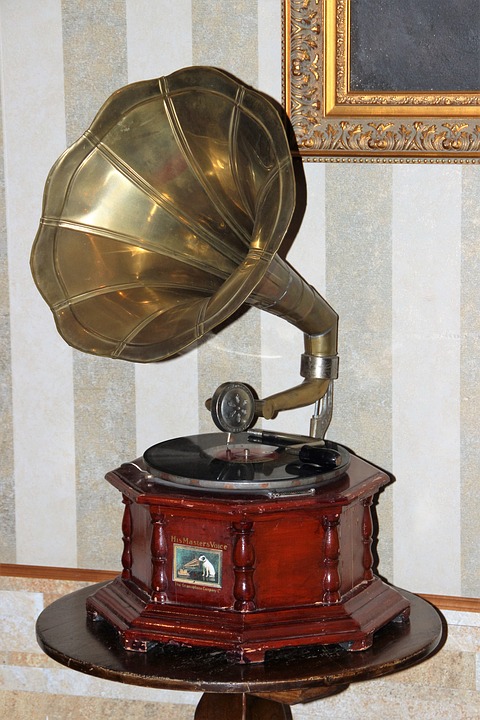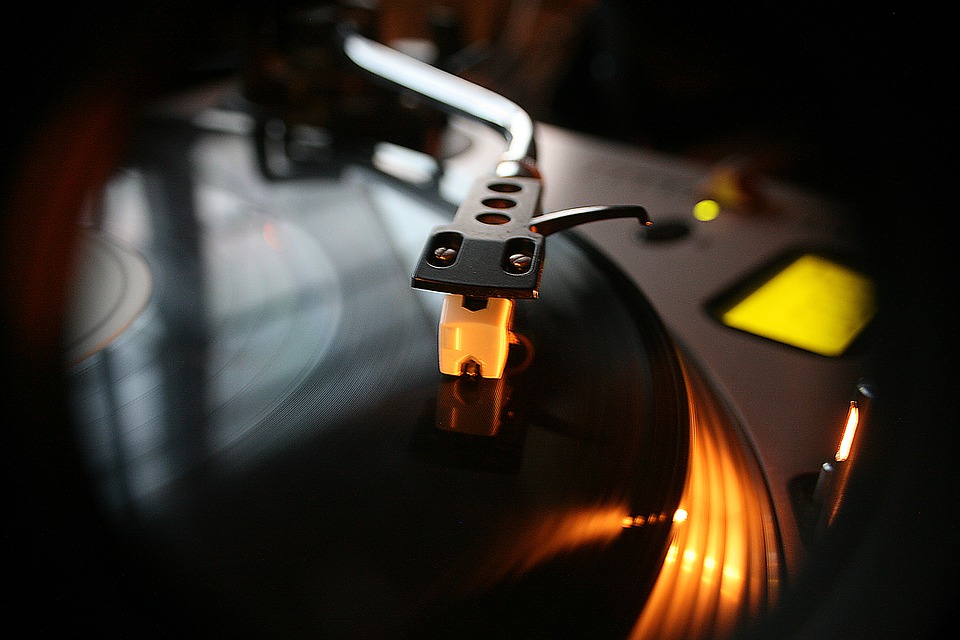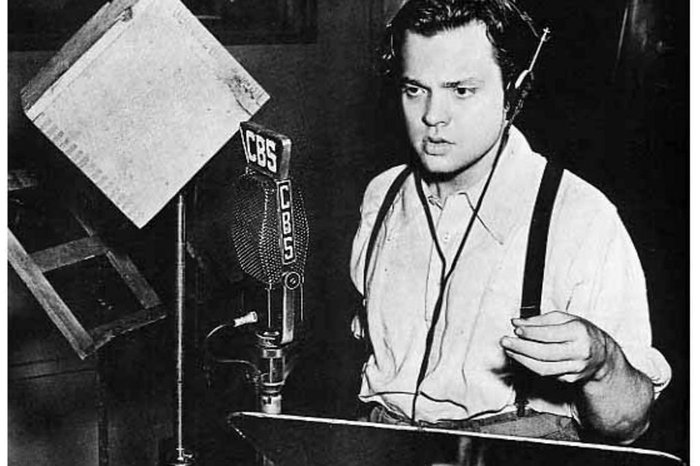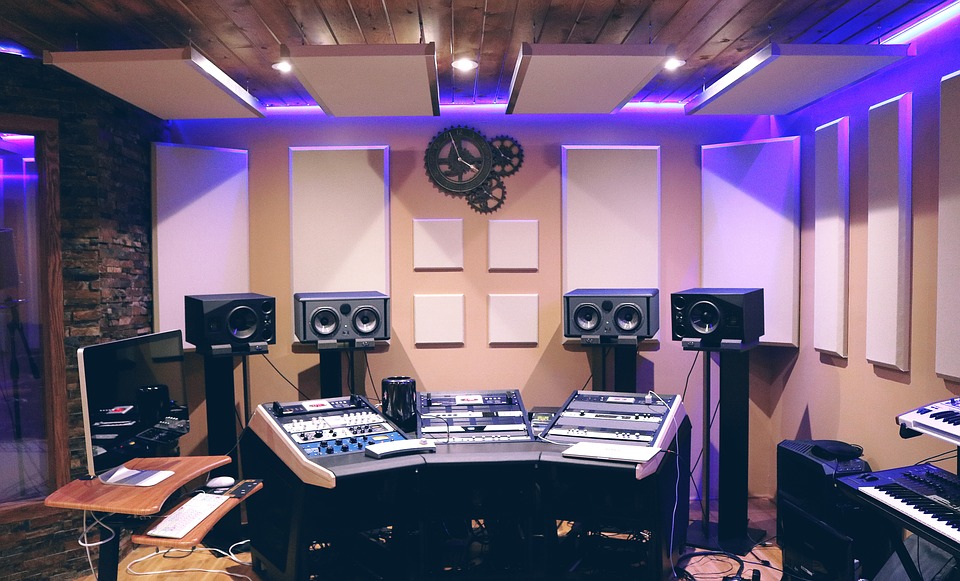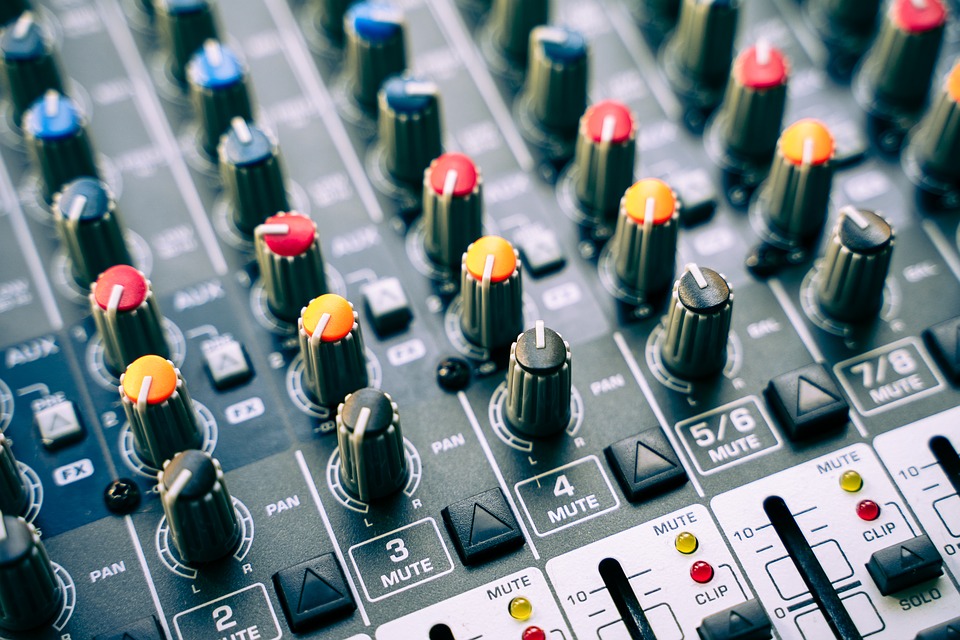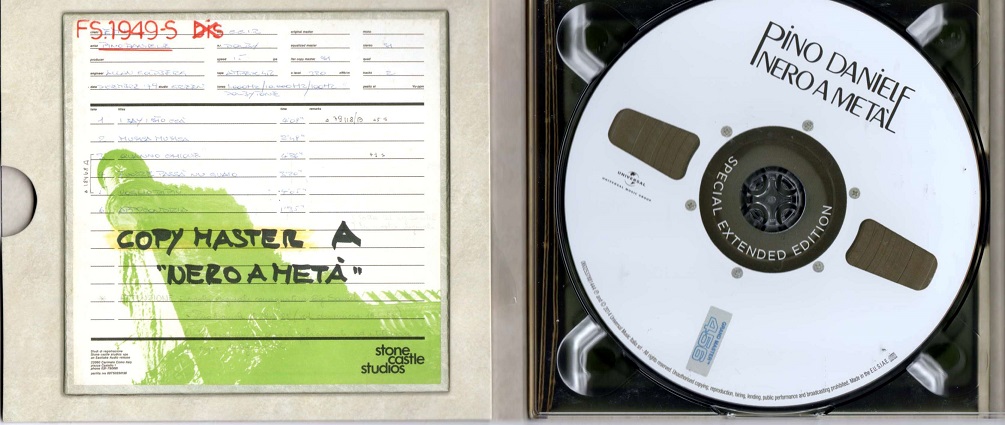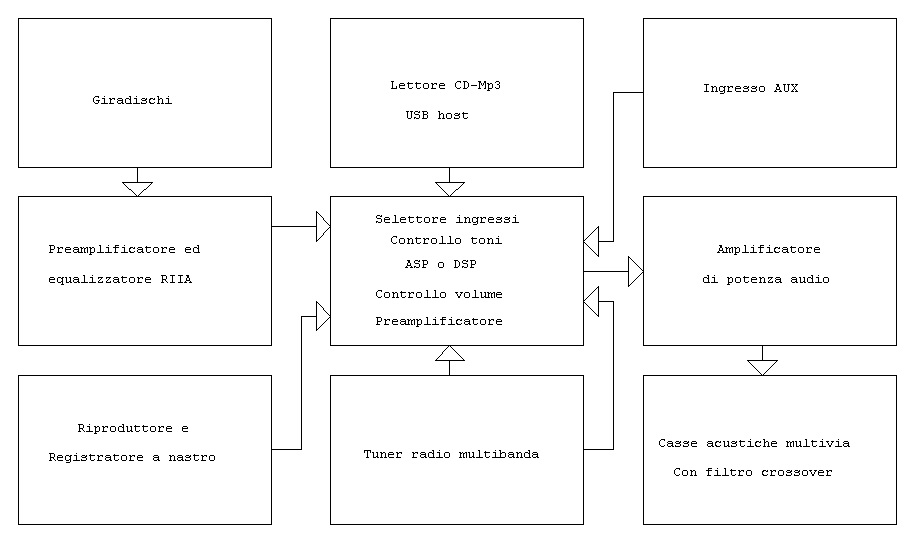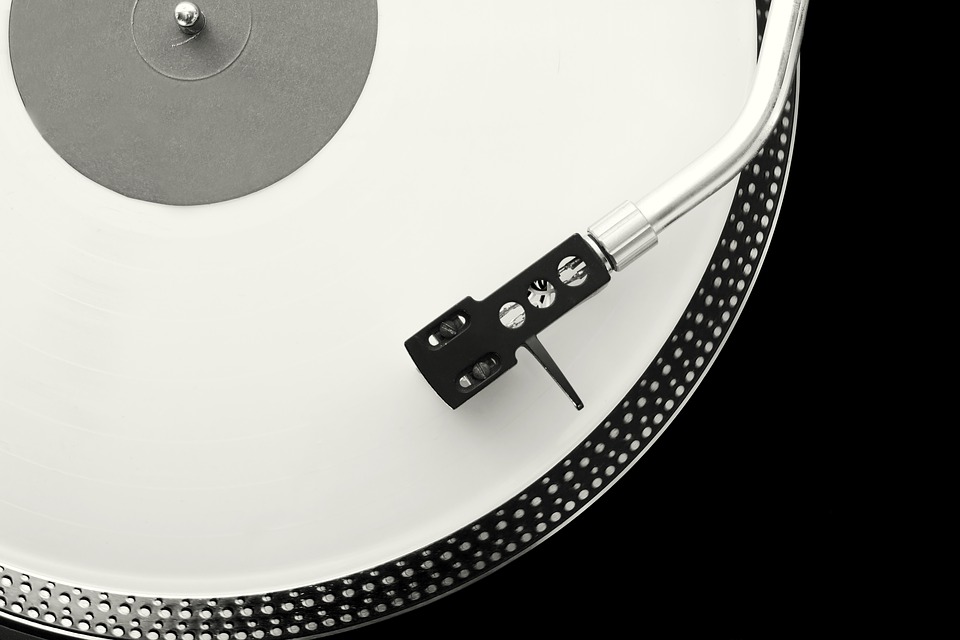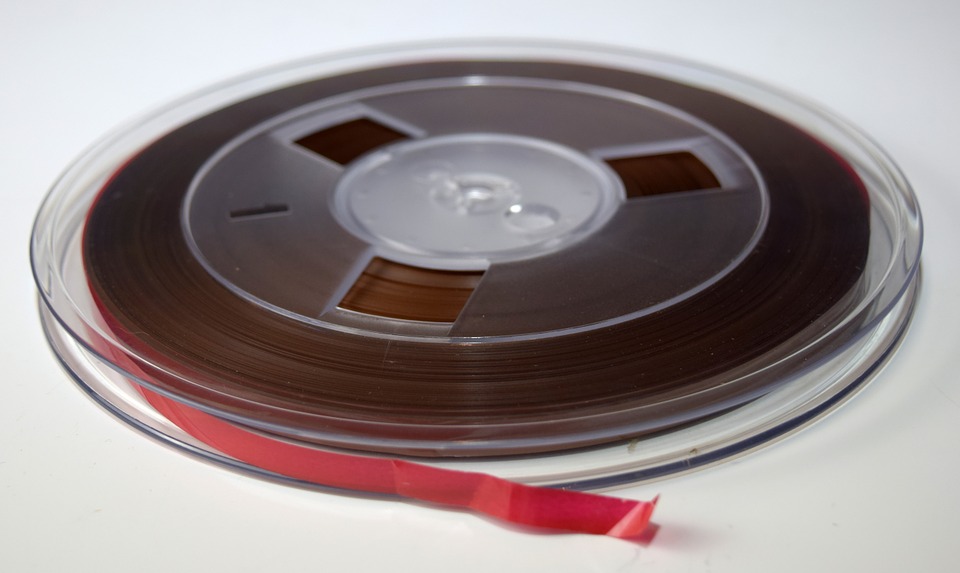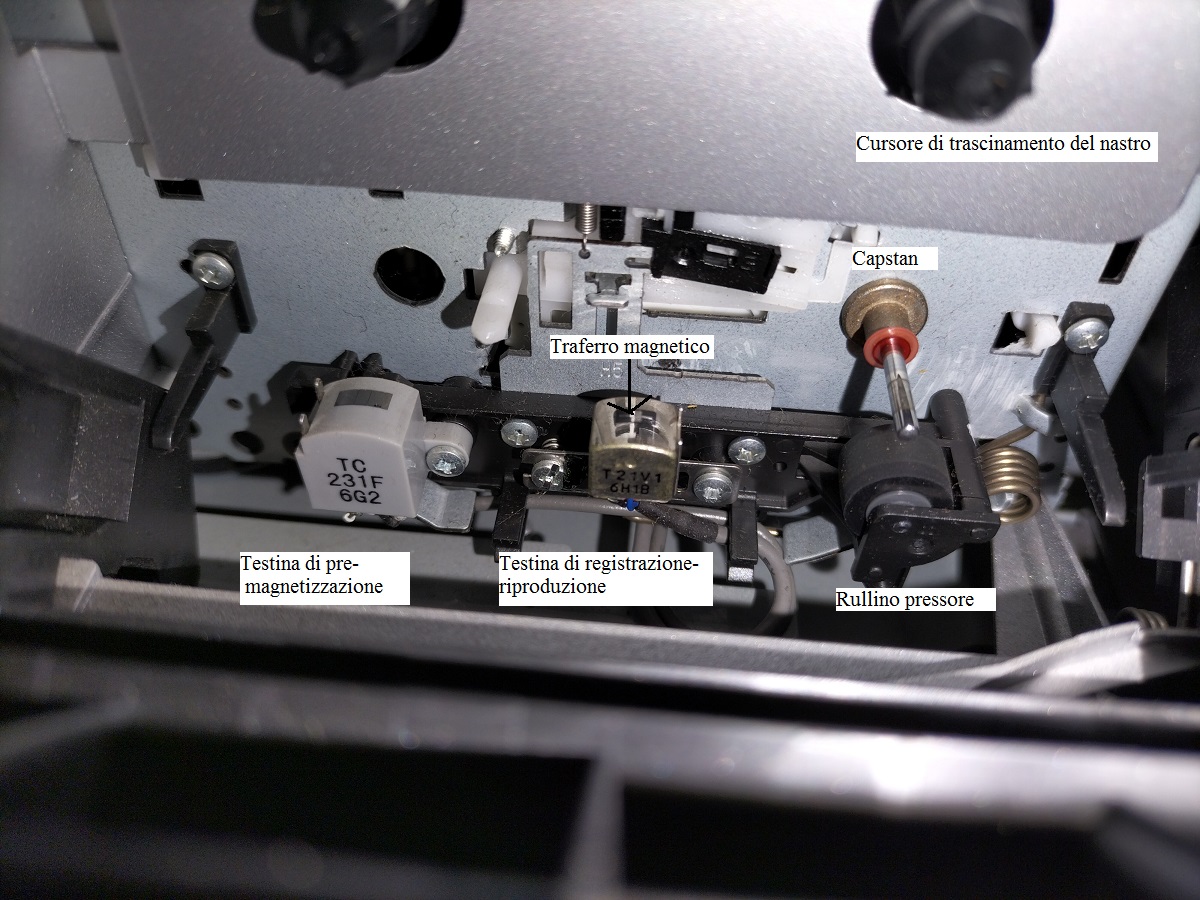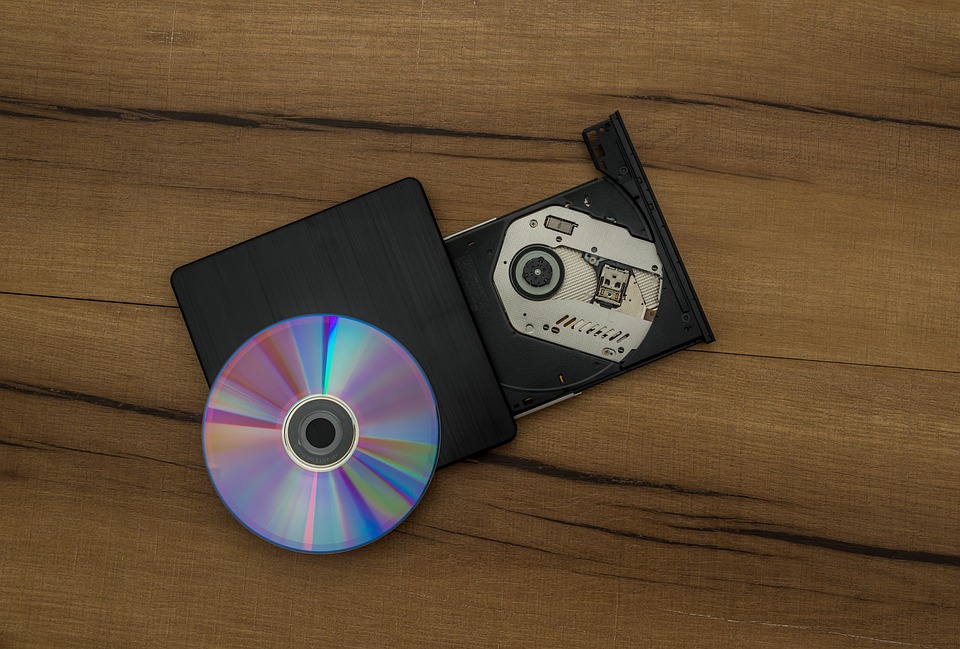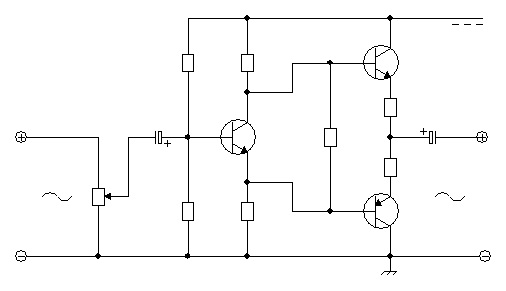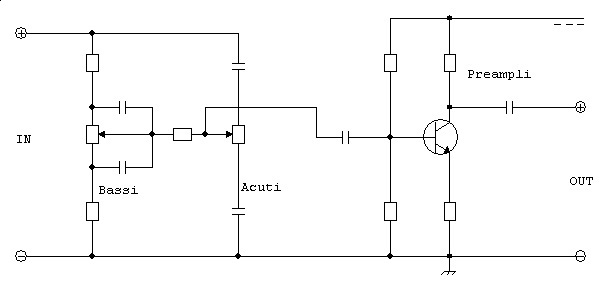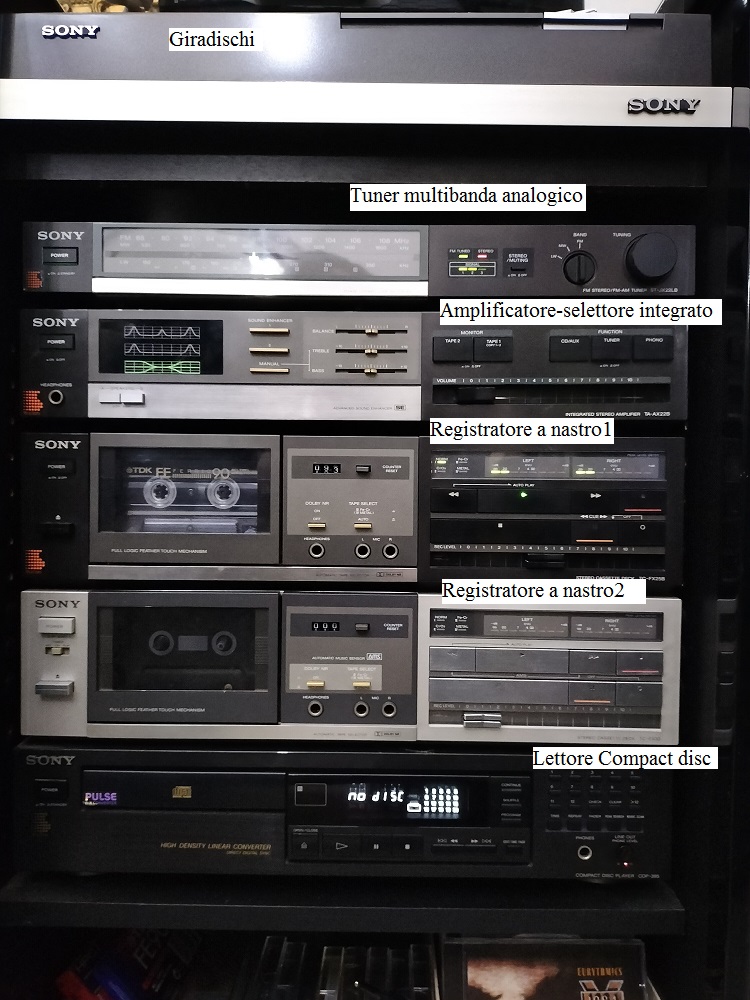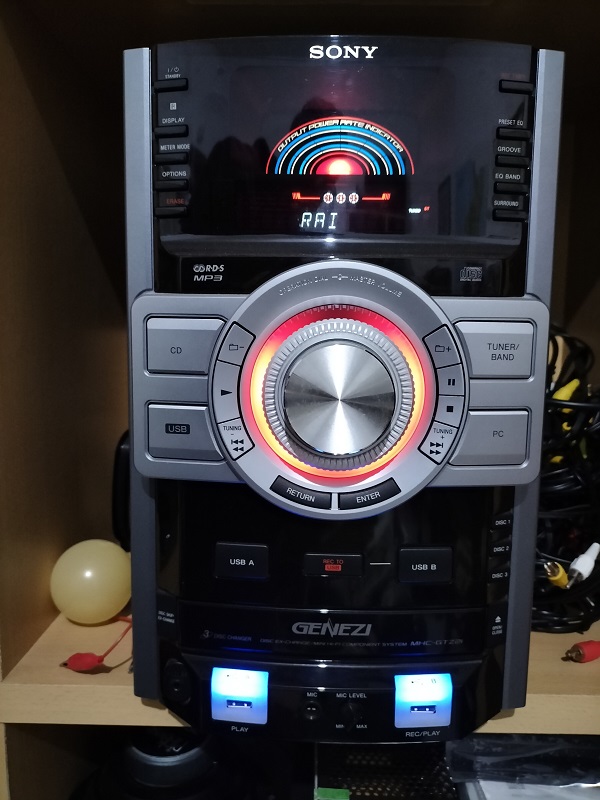 Armando Caligiuri electrons in
motion
Armando Caligiuri electrons in
motion

Welcome to my web page dedicated to Electronic Audio and Hi-Fi
I will try on this page to define with arguments suitable for everyone (as in the style of this site) the immense world behind the simple phrase "Electronics and audio Hi-Fi" is not like you will understand a simple task but I will try. Of course, as already mentioned on the other pages, it is impossible to condense a very vast subject in this small text, but if you intend to deepen (given my experience on the subject which begins in 1984) or you need professional advice, you can get in touch. with me via the Contact page.
Electronics and audio, historical notes
As we have seen in the active electronic components page and in the radiowave one of the most massive uses of electronics is that in the AUDIO field. Audio is the branch of electronics that uses signals and electronic equipment to record on special media and subsequently play music and singing, electronics are naturally also used in live musical performances to capture-modify-amplify-record- reproduce the performances of the artists.
Until the 1920s, non-amateur musical performances mainly took place live in the street or in concert halls and theaters by orchestras, bands or individual musicians, deriving them from the notes present on the staves, the alternative was recording-reproduction. mechanics with the gramophone (but only from 1887), a truly archaic system with a very questionable quality. This is because a technology was not available that would allow to record-reproduce performances with good quality and that was at the fore of all social classes, the advent of electric current and therefore of the first electronic equipment and the invention of the thermionic diode and triode allowed to invent the first turntables, the thread turner (archaic recorders) and carbon microphones as a transducer to pick up the audio, the arrival of radio transmissions gave a strong impulse to the research and development of new solutions to capture, record and reproduce the music and voices, but they were always expensive solutions and not for everyone and with low fidelity.
A new strong impulse to audio research for entertainment purposes came when the totalitarian regimes of the 1930s tried to use the radio for political propaganda purposes and then they tried to make the radio enter all homes by producing low-cost equipment and sold at a controlled price (with alternating successes).
But the real turning point came at the end of the 1950s with the economic boom in Europe and the appearance of the phenomenon of "screamers" (non-commercial music and non-opera singers), which allowed the development of the record industry and the consumption of music to all social categories and non-expert people, the contemporary advent of frequency modulation introduced radio broadcasts with hi-fi and stereo quality, this triggered the public's demand for audio-electronic equipment with more accurate fidelity and therefore the he arrival of Hi-Fi (high fidelity) as we know it today, the contemporary arrival of the transistor with its new reliability parameters and small dimensions opened a new world also in the audio field.
The stereophonic microgroove discs were then invented, obtained by engraving on a vinyl support (before they were in aluminum with a sealing wax surface coating), the stereo turntables to read the aforementioned discs and stereo tape recorders (reels and compact cassettes), later at the beginning in the 1980s after the invention of the compact disc (CD) by PHILIPS and Matsuschita-Panasonic, audio has experienced a new revolution starting to become digital and CD players with impeccable audio quality have appeared, in recent times the ATRAC-MPEG-MPASC-AAC-AMR and other compression encodings have made it possible to bring Hi-Fi audio (with lower quality) to the internet and therefore to make music a global heritage.
Here are some zoomable images:
Mechanical gramophone from the early 1900s Multi-bands radio from the 1940s
Micro groove disc read by stereo head Compact cassette 90 minutes tape
The famous radio conductor Orson Welles on CBS microphones in 1938 Thermoionic tubes used in early audio equipment
Components of the audio systems
Hi-FI audio acquisition and recording systems
High fidelity audio acquisition and recording is done with professional equipment of a certain class (and cost), the first link in the chain which is also the most important is the microphone.
The microphone is a transducer in charge of converting sound waves into electrical voltage variations, there are piezo-electric, condenser, ribbon and carbon microphones, they are named according to the type of material used for the transduction. It is the most important component of an audio recording system, because it must convert sounds into electronic signals without creating distortions and in the most faithful way possible. They convert the sound waves of musical instruments and vocals into a very weak electrical signal that will be pre-amplified by an internal low-noise amplifier and then conveyed via shielded cables headed with XLR connectors (balanced connectors) to the input of the Mixer (or mixer).
The mixer is an electronic device that takes care of receiving all the audio signals coming from the various microphones and from the pickups of the string instruments (cordophones) at its inputs, it is used to adjust the volume, the tones, the equalization and the amplification , and finally to mix them together simultaneously using potentiometers, at the mixer output we find the signals of the various musical instruments mixed together and ready to be recorded in analogue or digital mode. The mixer must have a sufficient number of inputs to allow you to connect the audio sources that we want to be part of the musical performance to be recorded and must have low noise, low distortion and high reliability, the inputs are numbered and the number of the input corresponds to that of the corresponding volume adjustment potentiometer, so that it is easy to identify the source to be adjusted. The mixer can be analog or digital, in this case the inputs can be directly digital and if you need to process analog signals, first convert them to digital using the A / D converters or the mixer itself can convert them via analog inputs and internal converters.
The A.S.P. (analog signal processor) or the D.S.P. (digital signal processor) are devices that process the audio signal in order to expand-compress its dynamics, add-remove spatiality and vary the volume and tones according to the timbre we want to associate with the musical performance to be recorded.
The recorder is the device that fixes the signals coming from the mixer and the ASP-DSP onto a reproducible support and therefore makes the musical performance or speech permanent. Once the recordings were made in analogue on magnetic tape with a low noise reel recorder and a minimum scrolling speed of 19.2 cm / S, in order to have an excellent audio quality, with the advent of the digital the recordings are carried out directly digitally in a Wav format through a workstation (without compression) with sampling frequency from 192 KHz to 256 KHz, this guarantees a very high frequency response and almost no noise. Digital audio files can also be captured via a D.A.T. (digital audio tape).
With the recorder at the
end of the acquisition chain you get the MASTER copy ,
that is the first original copy of the performance, from which you will
then obtain, after equalization, the mother recording of the vinyl discs
and the master compact disc.
In the performances to be
recorded live and not in the recording studio, all the equipment
described above are usually housed in a container or in a van located
near the stage where the performance takes place, the recording is then
taken to the studio for the following processing.
Here are some zoomable figures that will help you better understand what has been exposed.
Block diagram of a Hi-Fi record quality acquisition and recording system.
Professional microphone with anti-pop device Shielded microphone cable with XLR connectors
Professional reel-to-reel magnetic tape recorder D.S.P. professional with completely digital processing
Audio production and mixing studio A glimpse of a professional audio mixer
Master recording on analog tape (1980), vinyl records and compact discs will be recorded from the master tape after equalization
Hi-FI audio reproduction systems
The reproduction of the audio can take place both with high quality (and high cost) equipment and with less expensive (but less performing) systems, in any case the reproduction chain remains the same, the difference will be appreciated when listening and in case of Low-cost equipment will be less fulfilling and less defined. It must be borne in mind that to obtain high fidelity audio the whole chain must be made up of Hi-Fi equipment, the audio support to be reproduced must also be, otherwise the audio quality will expire decisively.
Below is the block diagram of a Hi-Fi audio playback chain.
Let's start analyzing the equipment in the chain:
The turntable is a device used to reproduce the audio recorded on vinyl records (or sealing wax in the past) on both sides. It is formed by an electronically controlled electric motor that makes an aluminum platter spin at a constant speed, the record to be played is placed on the platter, a head equipped with a diamond stylus flows between the grooves of the record and transduces the shape of the grooves themselves. in sounds, the signal obtained from the head is amplified and sent to the input of the equalized preamplifier according to the RIAA regulations, at the end of one side you have to turn the record and rearrange the needle on the guide groove to listen to the other side. Discs can be in various formats and at different speeds the standard formats are 16 rpm (past tense), 33 rpm (long playing), 45 rpm (contained only two executions) and 78 rpm (formerly). Of course, before starting playback, you need to set the right rotation speed on the turntable. the vinyl record was used a lot in the past, then with the advent of digital it was gradually abandoned, in the current era it is slowly coming back into fashion together with thermionic tube amplifiers simply because it is able to return an unmatched sound tone from the digital, very warm and full of details.
Vinyl record with grooves in evidence Head that reads a microgroove record
The tape recorder-reproducer reproduces the sound previously recorded on a magnetic tape support (reel or compact cassette), the tape moved at a constant speed by a dedicated mechanism while it flows from one reel to another passes in front of an magnetic gap obtained on a permalloy head inside which is housed an electric coil, which by the principle of self-induction transduces the orientation of the magnetic particles deposited on the tape (pre-oriented by the recorder) into a weak electric signal, the signal obtained is amplified-equalized and sent to the preamplifier input. The tape recording procedure takes place in the completely reverse way from what has been said a little while ago, the input signal is amplified-equalized and sent to the recording head which transduces the electrical signal in the orientation of the magnetic particles on the tape (magnetization). Before being recorded, the tape must be prepared (pre-magnetization), i.e. the particles must be pre-oriented in a chaotic way (BIAS current), this is whether it is a new magnetic tape and whether an already recorded tape is used (cancellation), to this is done by a dedicated head that is located before the record-playback head, to which the BIAS current is applied. What is important is that the air gap of the playback-recording head is correctly oriented with respect to the running tape (azimuth), otherwise the reproduction will be poor on other players with well aligned heads, the alignment is carried out by means of a spring and a screw on the head and playing back a test tape recorded according to the correct standard.
Magnetic tape in the reel Compact cassette path
The multiband tuner is an superetherodine radio receiver built according to the dictates that you can find on the Radiowave page of this site in the Receivers section, it is capable of receiving the medium wave band in A.M. and above all the VHF band II and III where transmissions take place in F.M. (analog) and D.A.B. (digital) which allow a Hi-Fi reception quality. With it you can receive commercial broadcasts, which provide an endless repertoire of music and news. The multiband tuner is very well cared for in terms of circuits, this is because it must have an impeccable frequency stability, a very high sensitivity to weak signals and must provide Hi-Fi audio quality, it can have analogue string tuning and variable capacitor with a speaking scale display, or electronic varicap diodes with 7-segment digital display.

Multiband tuner with varicap diode digital tuning
The Compact Disc (CD) player is a digital electronic device consisting of precision mechanics and an electronic circuit dedicated to the conversion of audio from digital to analog D/A, it can however have a digital output without conversion if the the next preamplifier-selector is able to process this type of signals. The CD is made up of two discs in transparent plastic material glued one on top of the other, between the two discs a membrane sensitive to laser rays with a predetermined wavelength is trapped, during the recording phase the LASER beam affects (burns) the membrane some sectors (not reflecting signal 0) and leaves others free (reflecting signal 1) in order to digitally record the musical information. During playback, the player through a LASER pickup of corrected wavelength (precision and complex component) reads the non-reflective (0) and reflective sectors (1) thus reconstructing the digital signal previously recorded on the CD, a high quality converter it transforms the digital information into a high fidelity analogue and transfers it to the shielded output sockets. The procedure just described is a very complex process, made possible thanks to the mechanics and optical components of high quality and high precision, microelectronics has then transformed the complex control loops of the mechanical-optical components and signal conversion into others that are easier to manage and produce, without integrated circuit technology the costs would have been prohibitive and probably the digital audio revolution would never have happened. It should be noted that the CD allowed to have very high quality audio and free from background noise and scratch, this is because the reading takes place through a laser beam and therefore without physical contact between the pickup and the audio support.
CD player with mechanism and LASER pickup Comparison of analogue and digital audio supports
For some years the digital USB port (universal serial bus) has also appeared on audio systems which allows you to connect the so-called USB sticks containing FLASH-ROM memories that can be used to store audio files in compressed MP3 format (MPEG layer3) or WMA (Windows media audio), a special integrated electronic circuit reads and decodes the compressed files, converting them to analog and restoring as much as possible the original audio quality affected by the compression.
The selector-preamplifier is a very important device, it accepts at its inputs the signals coming from the various audio devices seen above and through a switch allows you to select them one at a time, it sends the audio signal to be recorded to the recorder (tape, USB or CD), modifies its physiological characteristics through the tone controls or DSP-ASP, adjusts the output level (volume) and finally amplifies it to the right level so as to drive the next low-frequency power audio amplifier. The preamplifier must be low-noise, it must amplify voltage and have a very low harmonic distortion, the selector switch must be of excellent quality and extremely reliable. The pre-amplifier-selector can be both analog and digital, the inputs and the circuitry change between the two types, in the case of digital a certain number of A / D converters must be provided to allow it to work with analog audio devices. can also be found in combination with the power amplifier, in this case we speak of integrated amplifier.
Block diagram of an integrated amplifier
The audio power amplifier receives at its input the conditioned and pre-amplified signal previously from the selector-preamplifier and amplifies it in power (current and voltage) according to the needs of the listening environment or the preferences of the user, it is a complex equipment , and must be designed without compromise, because it must not add distortion and noise to the amplified signal. There are power amplifiers of various types and classes of operation, the cost is directly proportional to the quality of the components used and the power to be obtained, the amplifier will then have to drive the loudspeakers, which have a complex operation that is not purely resistive but sometimes inductive or capacitive, so it must have a good ability to deliver power without going into difficulty with particular loads or when a surplus is required. Recently, class D digital amplifiers have appeared on the Hi-Fi market, they work through P.W.M. technology (Power width modulation) and allow to obtain high powers with little heating (high efficiency), traditional amplifiers instead work in class A or A-B and do not have high efficiency, but in the case of class A they provide impeccable audio quality.
Simplified schematic of push-pull power amplifier Preamplifier with tone control
The loudspeakers are equipment usually built with wooden panels and contain inside the speakers, that is the transducers in charge of transforming the electrical signal coming from the amplifier into sound pressure, trying to do it as faithfully as possible, the speakers for the HI-FI they consist of a copper coil, which is integral with a paper or polypropylene (or aluminum) membrane and with a corrugated cloth damper, everything is mounted on a metal basket and the membrane is bound to it by means of a rubber or foam suspension. The coil is immersed in the air gap of a powerful magnet and applying the signal coming from the amplifier to it, the coil moves in the air gap and transduces the audio signal into sound waves. The speakers are divided into three types, the Woofer, that is the speakers with membrane, coil and large magnet to reproduce the low frequencies, the Midrange for the medium frequencies, which have smaller magnet and membrane and finally the Tweeter that are used to reproduce the higher frequencies and have small membranes. The loudspeakers with three speakers (three-way) are able to reproduce all audio frequencies optimally (from 20Hz to 20000Hz) thanks to the speakers optimized for each frequency, the speakers must be driven with the right frequency band to avoid damaging them so the their input must be preceded by a Cross-over filter, that is a low-pass filter for the Woofer, a band-pass filter for the midrange and a high-pass filter for the tweeter. The cross-over filters must be of good quality and with constant impedance to avoid excessive power losses and avoid damaging the power amplifier, and they must also be well calculated to prevent damage to the speakers by sending signals with a frequency that is difficult to manage. The acoustic box must be well closed and with sound absorbing applied on the internal walls to block the rear radiation of the speakers which, being in counterphase with the front one, would cause an attenuation of the sound pressure especially on low frequencies. There are also two-way loudspeakers, with only Woofer and Tweeter, they provide a fairly good fidelity but not the same as the three-way ones.
Wiring diagram of a three-way speaker full range loudspeaker
Vintage three-way loudspeaker Two-way loudspeaker
Vintage HI-FI system with separate components Compact Mini Hi-Fi equipped with many functions
I repeat
that it is impossible to condense in this small text the immense world
behind the phrase "Electronics and Audio" but if you need clarification
or advice you can write to me at the address listed on the "Contacts"
page.
Thank you for visiting my website and following my guide, please come back soon.
Home Disclaimer Return at the top of the page
Home
Informatics, Computer networks , Software and operative system
Electronics, Active components, Passive components
Radiowave
Seismology
Contacts
Who i am
Audio
Created and mantained by Armando Caligiuri (C) 2024 Version 3.2 ext
Armando Caligiuri, Electronic senior expert, Electronic and I.T. maintainer, electronic project implementer, I.T. consultant
Webmaster Armando Caligiuri, for the use of the contents of the site visit the Disclaimer page
